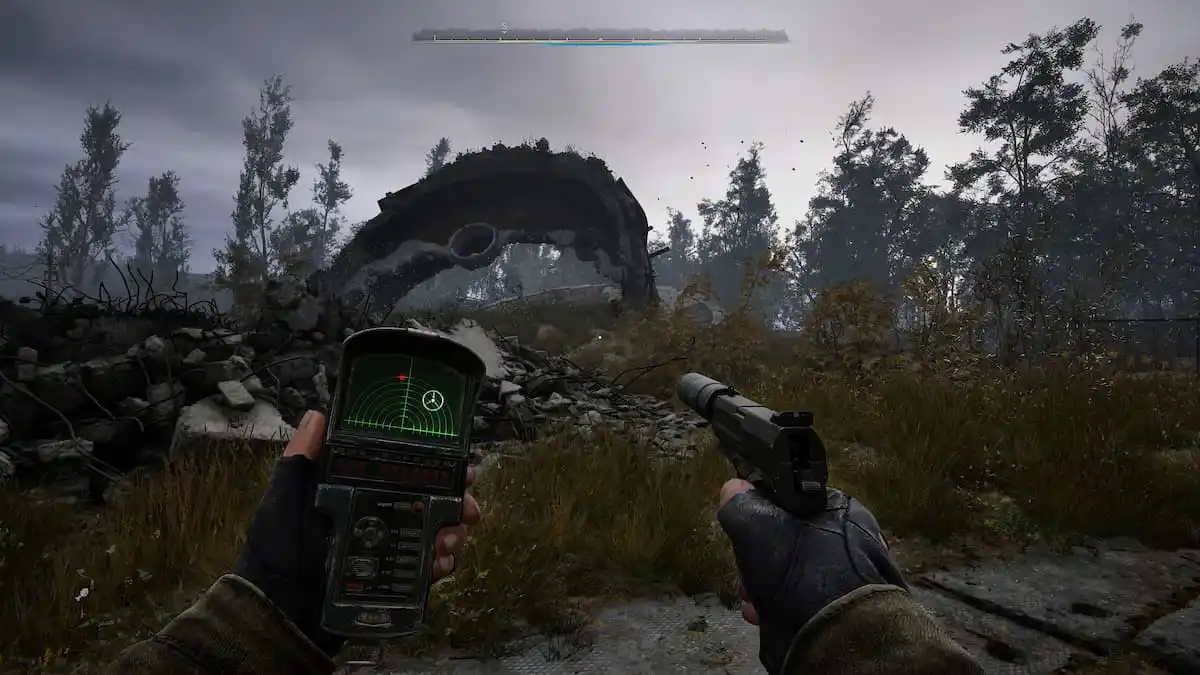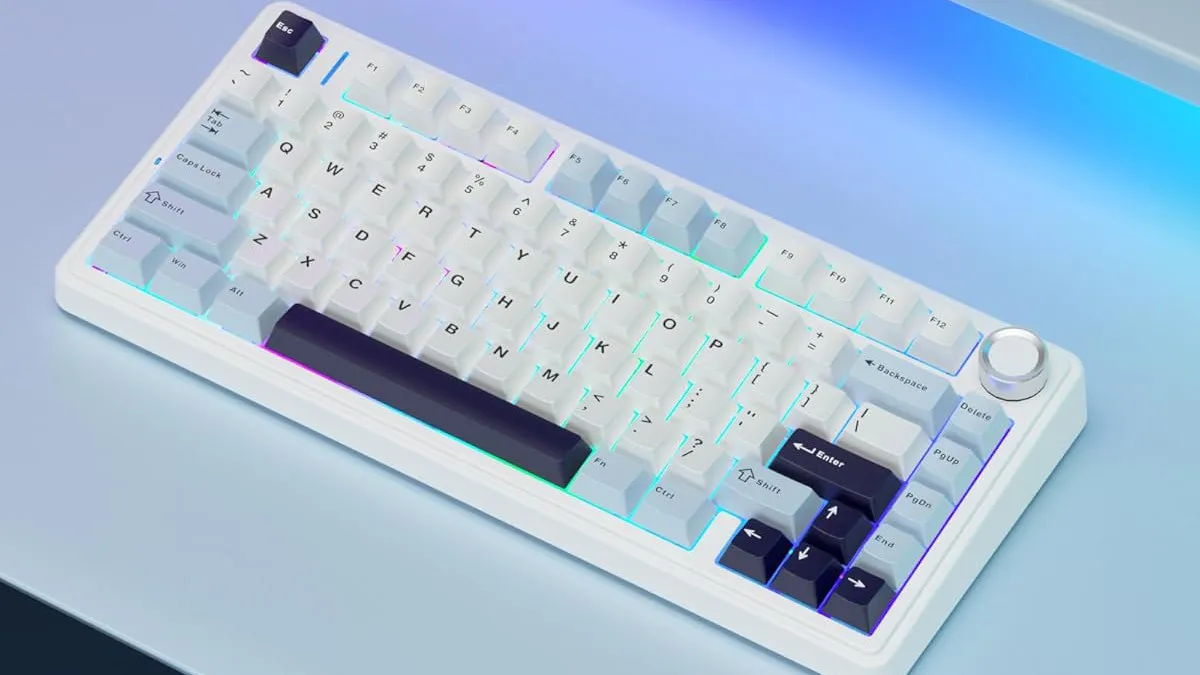I grew up in an era when the only keyboards available were hulking slabs of plastic with more keys than you could ever need. They had massive number pads, a whole area for your arrows, and even a “navigation cluster” for keys a Quake-addicted kid in the nineties would never use.
Back then, your keyboard ate up all your desk space, and we liked it. We just didn’t know better. Thankfully, we’ve moved on from those dark days. The rise of laptops forced designers to come up with ways to fit as much of the functionality of the keyboard in a smaller form factor, and so we saw the numpad disappear and the “function” key come to prominence.
Soon, those trends made their way to desktop keyboards, helped along by the custom keyboard movement that catered to users wanting to trim the fat and focus on the keys that are, well, key. Yet, with all the advancements mankind has made with keyboards and keyboard accessories, most users today are still stuck on their full-size, 100% behemoth. Statistically, this is probably you, so I’m here to let you know that keyboard tech has come a long, long way. It’s okay to move on.
See all those keys that you almost never use? Get rid of them. You won’t miss them.
No, I’m not proposing you switch to a 40% board—I would never wish that sort of inconvenience on you. What I am saying is that there’s a keyboard size that’s just right for you, the modern user who no longer wants a monster on their desk yet needs a real keyboard that does real keyboard things.
That size is 75% compact.
What are all the keyboard sizes?
Keyboards come in all shapes, sizes, and configurations. There’s the full-size keyboard I was talking about earlier, the 104-key gargantuan that is the default for most users. Anything smaller than that is called a “compact” and is categorized roughly based on how much functionality it has compared to a full-size one (also known as a 100% keyboard). For example, a 40% compact has about 40% of the keys a 100% keyboard does.
The following is a quick rundown of the primary size categories and how they compare in footprint and functionality:
| Name | Rough Dimensions (inches) | Description |
|---|---|---|
| Full-size (or 100%) | 17.5 x 5.5 | Comes with all the keys that a keyboard can have. This includes the full function row at the top, a complete number pad, arrow keys, and a dedicated navigation cluster for Home, End, ScrLk, Ins, Del, PgUp, and PgDn. |
| Tenkeyless (TKL, or 80%) | 14 x 5 | Almost all the keys of a full-size minus the number pad. |
| 75% | 12.5 x 5 | Almost all the functionality of a TKL but with a tighter arrangement. |
| 65% | 12.5 x 5 | Keeps the arrow keys but moves many of the navigation keys to Fn multi-function keys. |
| 60% | 11.5 x 4 | Arrow keys are moved to multi-function Fn keys. |
| 40% | 9 x 3.5 | Only has letters, numbers, and a few navigation keys. Made for masochists. |
So, what makes 75% the best keyboard size?
Essentially, the 75% layout has all the functionality of a 80% Tenkeyless but somehow has the footprint of a 65% compact. That’s maximum functionality in the smallest possible space, baby! By economy of real estate, the 75% is clearly the best keyboard size.
I owned both a TKL and then a 65% before I was finally saved by my 75%. To me, the TKL felt so big that I might as well have gone full-size and reaped the benefits of having a full number pad, too. With the 65% compact, it felt like too many of my favorite features had been locked away behind Fn key combinations that required extra joints for me to activate.
Now that I’ve thoroughly convinced you, you’re probably wondering what keyboards to go for. Shockingly, there aren’t many 75% keyboards on the market, at least compared to 60% and 65% compacts, which are still the most popular non-100% choices among enthusiasts. The good news is that the available 75% keyboards are very good. I’ve put together a few mini-reviews below to help you get started.
| Key Specs | • Integrated dial • Three-way operation modes (wired, Bluetooth, and RF dongle) • RGB underlight • Hot-swappable, no-solder switches |
| Pros | • Great value • Satisfying experience out of the box • Fully customizable with QKM/VIA |
| Cons | • Terrible software • Opaque keycaps |
If this is your first experience with a compact keyboard, or with mechanical keyboards in general, then get the AULA F75.
This budget-friendly keyboard comes in a variety of colorways. The one I’ve chosen to highlight above mixes sharp whites with soft blues for a welcoming modern look, and the other variants are just as appealing. The keyboard is a bit larger than other 75% keyboards with a design that prioritizes clarity at the cost of compactness, allowing for relatively wide gaps between functional areas and even an integrated dial. It operates in wired and wireless modes alike and can connect via Bluetooth or included USB dongle.
The AULA F75 comes with Leobog linear switches, which are generally considered a safe, middle-of-the-road option. In real-world use, though, they’re surprisingly tactile, with a satisfying “thonkiness” (that’s the technical term) that you don’t usually get with a budget keyboard. If the AULA F75 is your first mechanical keyboard, its above-average tactile experience out of the box might actually spoil your experience for future keyboards, which usually require a bit more work to get this sort of satisfying touch.
As with any compact keyboard, the F75 makes frequent use of the Fn key for layered functionality. Unlike other keyboards, though, the stock keycaps don’t actually tell you what the alternative functions are for the F-keys. That’s something you have to find out through trial and error or set up yourself through AULA’s proprietary keyboard software.
Speaking of the software, that’s probably the only part of this keyboard that actually feels low-cost. The official software is a horrible, clunky, unstable mess that barely works and brings down an otherwise excellent keyboard experience. Fortunately, the F75 is also QKM/VIA-compatible, so you can do all your customizing through VIA instead.
The AULA F75 is a great first mechanical keyboard for someone just getting into the world of compacts. It features all the customizability and features that you’d get from higher-end compacts, with an out-of-the-box feel better than almost anything else in its price range. The keyboard also works just fine out of the box, so if you aren’t up for modifying the F75, then you can enjoy it as-is, straight from the factory.
| Key Specs | • Tight key arrangement • Three-way operation modes (wired, Bluetooth, and RF dongle) • RGB underlight • Hot-swappable, no-solder switches • 1000Hz polling rate (with RF dongle) |
| Pros | • Great look • Fully customizable • Low profile for extra portability |
| Cons | • Low profile might be an ergonomic issue for some users |
The NuPhy Air75 V2 is a no-nonsense typing champ with a friendly look and all the functionality you’ll ever need for typing and gaming. It’s retro chic, with a subdued charcoal gray color scheme with splashes of tint on the most important keys.
You can use the Air75 wired to your PC with a USB-C cable or wireless via Bluetooth or the included USB RF dongle. As is typical of Bluetooth keyboards, the connection can get spotty in particularly congested environments. The RF dongle is where it’s at; it provides a much more stable connection with 1000Hz polling, to boot. Unless you’re a pro gamer, you won’t even feel the difference in latency between when the Air75 is connected through the RF dongle and when it’s wired.
The compact keyboard’s low profile might be an issue if you prefer a keyboard with a bit of height. It doesn’t come with a wrist rest, so keep that in mind if that could potentially be an ergonomic problem for you.
Some users have complained about the stock keycaps, which are opaque and don’t allow the keyboard’s RGB lighting to shine through. Fortunately, the Air75 is a highly customizable keyboard, and swapping out keycaps is as easy as pulling out the current caps and snapping on new ones.
On customizability, the Air75 V2 also supports configuration through the QMK/VIA software. This software lets you modify the functions of each key on your board, swap around keycaps and create totally new layouts. If you’re a tinkerer, VIA is something you’ll love toying with. Personally, I wouldn’t get a compact that doesn’t support it, as the ability to move around my keys is a must-have for me now.
If you’re not feeling the color scheme, don’t worry—the Air75 is totally hot-swappable. That means you can always trade out the switches it comes with, so long as the replacements are Gateron-compatible.
| Key Specs | • 75% keyboard layout • Dedicated power button and mute button • Full RGB lighting • Textured wrist rest • 8000Hz polling rate |
| Pros | • Premium build quality • Comes with quality-of-life mods like sound-dampening foam and factory tape mod • Impressive polling rate of 8000Hz |
| Cons | • No wireless capability • Razer Synapse software requires internet connectivity |
As its name suggests, the Razer BlackWidow V4 75% is the 75% variant of Razer’s wired gaming keyboard. Unlike most general-purpose keyboards, high-end gaming keyboards like this one typically have higher polling rates (the BlackWidow V4 has a polling rate of 8000Hz) and are designed for wired use (the BlackWidow V4 does not have wireless capabilities).
This is Razer’s first keyboard to feature anything smaller than a full-size layout, and they went all out, introducing a level of customizability they’ve never had before. The BlackWidow V4 75% is the first of Razer’s keyboards to feature a hot-swappable PCB, and so it was the first to allow the end user to swap out the default Razer Gen-3 switches. Hot-swappable PCBs have been a thing for years now, but it’s good to see a big name like Razer finally get in on the open-source spirit of the mechanical keyboard community.
Despite the loudness of its design, the BlackWidow V4 75% is padded out and lubed up for quiet typing. Sound-dampening foam, high-density fiber plating, proprietary Razer Orange tactile switches, and built-in factory tape modification are all meant to keep the clickety-clackety to a minimum. These are things that keyboard enthusiasts usually have to manually mod into their keyboards, not features that come stock with a new compact. You’ve go to appreciate the time and effort that went into making the BlackWidow V4 75% a great typing experience.
Key takeaways
The 75% keyboard maximizes compactness and functionality, offering virtually all the functionality of a Tenkeyless keyboard with a desk footprint that rivals 65% keyboards. Unlike compacts of smaller sizes, you aren’t giving up any more keys than what’s necessary, and you still get a fully functioning board that does all you need it to do.
It’s time to get rid of your full-size keyboard. Enthusiasts learned years ago that barely anyone needs a number pad, and unless you’re an accountant or professional mathematician (I don’t know what kind of jobs would need a numpad), it’s time you join the party.
Read the full article here


























Discussion about this post